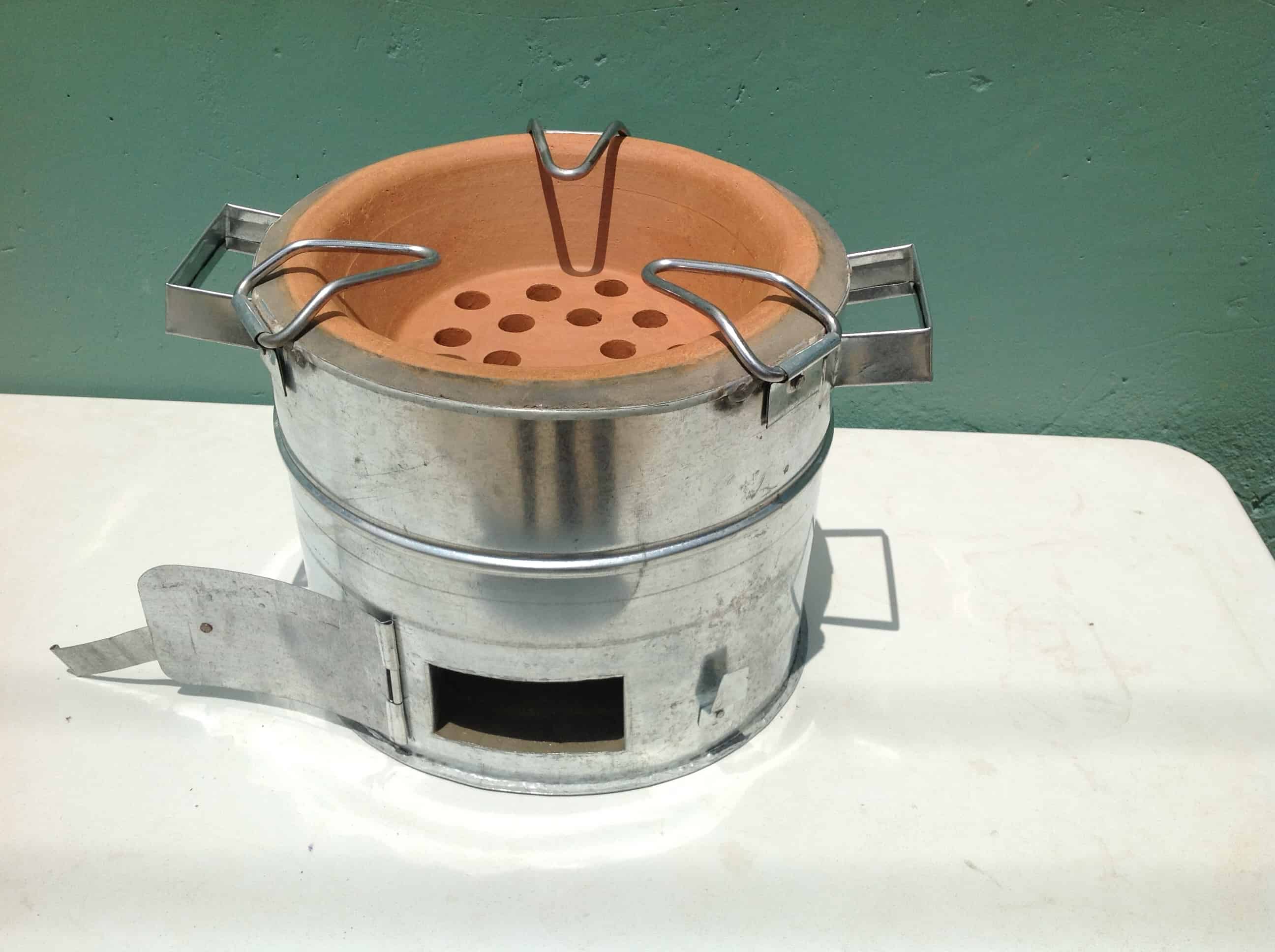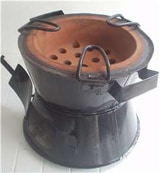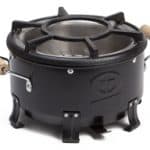Charcoal Stoves
The Global Alliance for Clean Cookstoves states. “Most traditional charcoal stoves are made of scrap metal with no option to regulate the burn rate of the fuel. Often without pot rests so that the pot sits directly on the charcoal. This causes high emissions of potentially lethal carbon monoxide and wastes a significant fuel. The inability to regulate the air supply and turn down the heat also leads to unnecessary fuel waste. Lab testing indicates that improved charcoal stoves can reduce fuel use substantially.”
Laboratory testing suggests that improved charcoal stoves reduce the particle emission generated by an open fire. However, only some ‘improved’ charcoal stoves result from high-end engineering. One wonders how devastating charcoal production is to the environment.
Nevertheless, the SNV 2011 Anlayses* identified that 72% of the Rwandanian urban population relies on charcoal for cooking. So in this instance, the use of improved cookstoves is a critical way to reduce charcoal and biomass consumption in Rwanda. In addition, these rudimentary charcoal stoves improve families’ health while substantially reducing household expenditure on charcoal.
Africa
Gyapa charcoal stove – The Gyapa Stove is a charcoal-burning stove made by Gyapa Enterprises in Ghana. Established in 2002 with initial start up capital from USAID. The Gyapa cookstove is a low-cost, locally manufactured charcoal-burning cookstove. It aims to improve the health of families while reducing household expenditure on charcoal. This stove technology reduces the charcoal needed for cooking by up to 50 per cent. The Gyapa cookstove contains a ceramic liner, the critical element for heat absorption and retention and, thus, emission reduction.
Envirofit charcoal stoves are retailed by ArtiEnergy. Envirofit formed in 2003 as a spinoff company out of Colorado State University. The aim is to develop well-engineered technology solutions to solve global energy and health challenges. The CH-4400 is charcoal burning cookstove. Its carbon monoxide emissions exceed the World Health Organization’s 60-minute exposure limits. The insulated metal alloy combustion chamber reflects radiated heat back to the charcoal bed. This eliminates much of the carbon monoxide generally associated with typical charcoal stoves.
* Charcoal Value Chain and Improved Cookstoves Sector Analyses: A SNV Rwanda Positioning Document, Courtney Blodgett, 2011.



